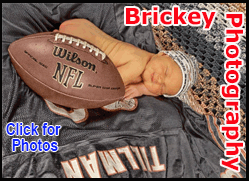|
 They found that study participants who had sprained
their ankles were about half as likely to suffer a second sprain
when they wore a brace, compared to those who only got neuromuscular
training. They found that study participants who had sprained
their ankles were about half as likely to suffer a second sprain
when they wore a brace, compared to those who only got neuromuscular
training.
This doesn't mean people with sprained ankles should go for braces
and forget about neuromuscular training, the study's senior author
Dr. Evert A L M Verhagen said.
The results could be due to chance, he told Reuters Health. And
since past research shows that both the braces and the training
offer some protection, the researchers couldn't ethically include a
test group that got neither measure, said Verhagen, who studies
public and occupational health at VU University Medical Center in
Amsterdam.
Originally Verhagen's team thought both methods would be equally
effective, and only wanted to see which cost more money in the long
run, he said.
Ankle sprains represent one quarter of all sports injuries, the
researchers note in the British Journal of Sports Medicine.

In The Netherlands, costs associated with every sprained ankle are
close to 390 euros ($500), which translates to nearly 208 million
euros ($286 million) spent annually just in that country, they
write.
For the study, 380 adult athletes under age 70 who played a sport
for at least one hour weekly and had recently sprained an ankle were
separated into three groups: one group got a two-month neuromuscular
training program, one wore a semi-rigid ankle brace for 12 months
and the third group tried both training and a brace at the same time
for two months.
People in the training group performed special ankle exercises at
home for 30-minute sessions three times a week. The training
includes using a balance board and watching an instructional DVD
that demonstrated the exercises.
The brace group was given an Aircast A60 Ankle Support, available
online for between $40 and $50.
In the yearlong study, 69 participants reported another sprain of
the same ankle. Those who wore a brace were less likely to suffer a
sprain than the training group, with 15 percent of the brace wearers
and 27 percent of the training group reporting a sprain.
Of the group that got both training and a brace, 19 percent had a
second sprain in the same ankle.
No one group lost more time or spent more money on their sprain
injuries — all "second sprains" seemed to be roughly as severe in
all groups.
[to top of second column] |

"Based on my experiences I assumed that a combination of bracing
and exercise would be best," said Timothy A. McGuine, senior
scientist in the department of Orthopedics and Rehabilitation at the
University of Wisconsin School of Medicine and Public Health in
Madison.
Though the results are surprising, McGuine, who was not involved in
the research, said he believes them since the study was well done
and the authors are quite respected in the field.
Verhagen cautioned, "We have only established an effect on the
prevention of secondary injury."
His group also did not consider other important complaints like
pain, instability or performance. Other studies have found that
neuromuscular training might help with those other aspects of
recovery, he said.
"Each injury and patient situation is unique, and a good therapist
or athletic trainer will tailor post injury treatment for a
particular situation," McGuine said. "You have to remember that
neuromuscular training has the potential to also lower the risk of
other knee and lower leg injuries — bracing affects the ankle but
will not reduce the risk of injury to other leg structures."
Past research suggests the risk of a second ankle sprain goes up by
50 percent in the year following a first sprain.
Sports with lots of jumping, and certain positions like playing at
net in volleyball are especially prone to sprains.
Certain individuals suffer from many recurrent ankle sprains and
researchers still can't say for sure why, Verhagen noted. In his
study, those with many past sprains had basically the same recovery,
but did seem to follow directions — for the brace or the training
program — a bit better than others, he said.
For all preventive measures, braces or training, they can only work
if you actually use them, Verhagen said.
 ___
Source: http://bit.ly/1dyopj2
British
Journal of Sports Medicine, online Jan. 7, 2014.
[© 2014 Thomson Reuters. All rights
reserved.] Copyright 2014 Reuters. All rights reserved. This material may not be published,
broadcast, rewritten or redistributed. |